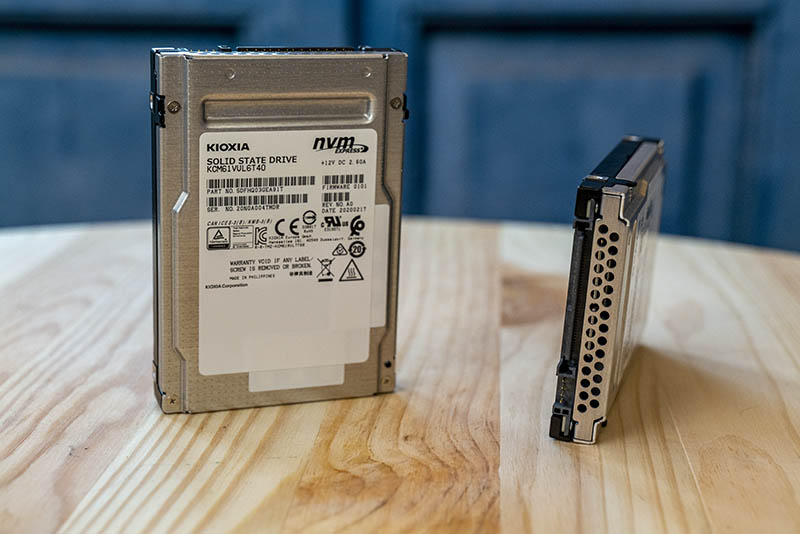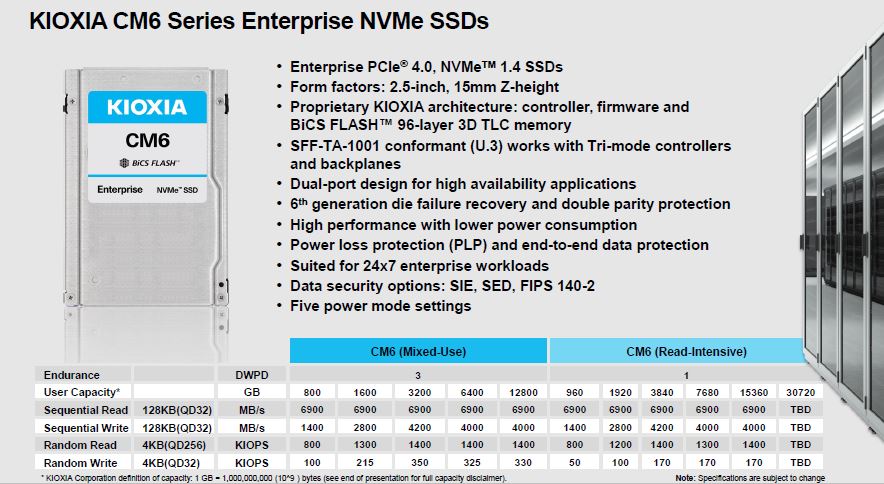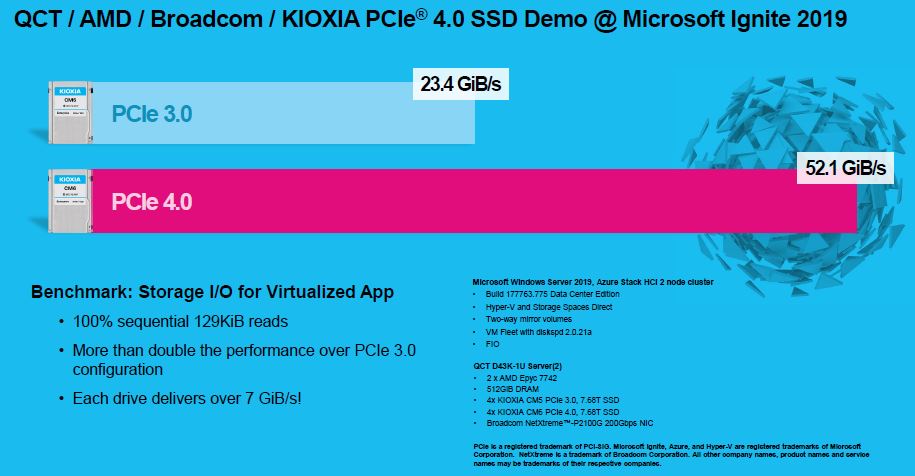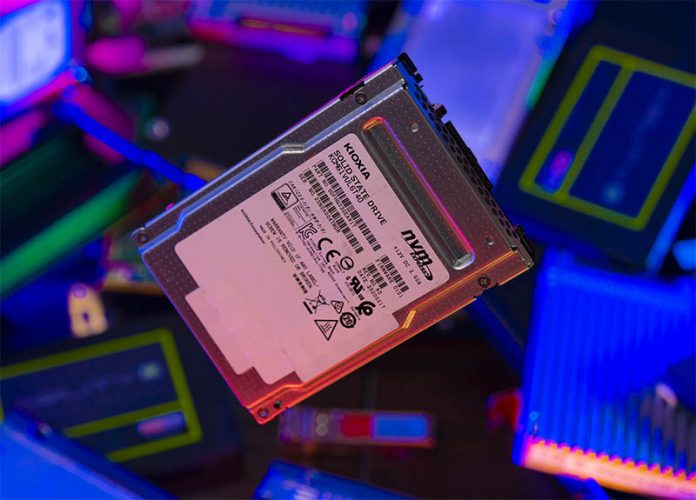In the SSD industry, over the past several years we have become complacent. Since 2012 PCIe Gen3 emerged with NVMe SSDs arriving then saturating the new interface not long after. We then went into a period where major advancements were largely due to new NAND technologies bringing larger and more affordable capacity points. With PCIe Gen4, we now have the opportunity to utilize a higher bandwidth interface. In this review, we are going to look at the Kioxia CM6 which is one of the first PCIe Gen4 drives on the market. To put some perspective around the gravitas of this product, a single Kioxia CM6 is able to out-perform an array of SAS SSDs on a PCIe Gen3 x8 controller while also being a small 2.5″ form factor and hot-swappable.
During the process of setting up this review, we actually found some really interesting server architecture principles at work that led us to not be able to use our PCIe Gen3 data set and instead use a very specific configuration. Since we wanted to give a system and market perspective on this, our Editor-in-Chief, Patrick, is going to weigh in on some of the market perspectives at the end of this article.
Kioxia CM6 Overview
The Kioxia CM6 comes in a fairly standard 2.5″ drive form factor. We will note that STH covered that Kioxia is working on EDSFF PCIe Gen4 SSDs that adopt the new EDSFF form factor that will become more popular over the next few quarters. While you may be familiar with the 2.5″ form factor that has been around for decades if you want to see an EDSFF system you can see an example here. The major change with this generation is the connection. We have a SFF-8639 wired compliant for SFF-TA-1001 U.3. This is designed to help servers better handle a mix of SATA, SAS, and NVMe SSDs. As we will show in the performance section, PCIe Gen4 SSDs such as this Kioxia CM6 will make SATA and SAS largely irrelevant. Still, this uses the traditional layout pioneered years ago since the basic connector form factor, like the 2.5″ form factor, was designed for spinning disks.

We previously discussed the key specs of the Kioxia CD6 and CM6 PCIe Gen4 SSDs but we wanted to pull in some of that spec information here. These are the specs of the Kioxia CM6. We are specifically testing the CM6 (Mixed-Use) 6.4TB (6400GB below) version. This will offer us 3 DWPD endurance and performance well beyond PCIe Gen3 x4 NVMe SSDs. That endurance is likely more than most will ever use on a drive like this as it is being rated for over 19TB/ day of use.

Some of the other key features here are that the drive features power loss protection (PLP) along with a number of data recovery features such as the ability to recover from an entire NAND die failure. Also, we have updated security options which are important in current drives. Kioxia is also thinking ahead to the SAS replacement initiative and providing dual-port support where the PCIe x4 interface is split into two PCIe Gen4 x2 interfaces. This allows drives to be connected to two controllers for active-active configurations. We have not seen many of these PCIe Gen4 active-active solutions available, but the ecosystem needs drives to make that a usable server feature.
On the performance side, Kioxia and Microsoft showed over 7GB/s of performance from the CM6 SSDs using Storage Spaces Direct. This is nothing short of impressive and why we wanted to test the drives.

Let us move on to performance testing. There we found way more than we expected.





Page 1 = ok.
Page 2 = WOW and more WOW
Page 3 = Classic STH
Stellar Eric.
That EPYC and Xeon storage analysis is f***ing awesome. I haven’t seen anyone else do that. Everyone else just assumed they are the same.
You might want to make an article just from that so more of the chip audience sees it. You need it here too I guess but that’s like a mini-article within a review.
that’s solid pcie investigation. you didn’t really need to do that since nobody would have known better but it’s great you actually did it.
I was gonna comment on that product photo… Then I got to page 2. That’s a gem!
P4510 was released ~2years ago and is about 1DWPD (and not 1-3 DWPD). CM6 is a medium endurance drive (for write-intensive applications) vs P4510 is read-intensive focussed. Not sure if that’s the right comparison to make here.. The equivalent would be P4610 from Intel for medium endurance SKU comparison